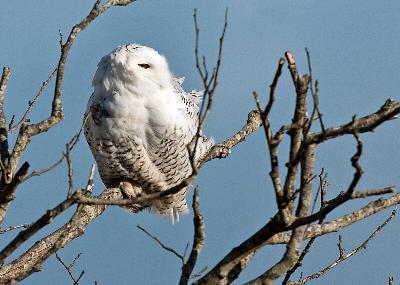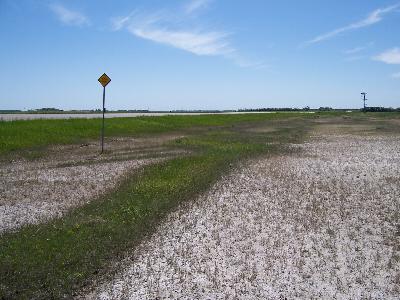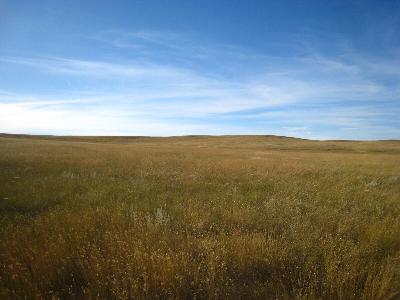Discover Natural North Dakota
Natural North Dakota

Natural North Dakota
Author: Prairie Public
Subscribed: 22Played: 678Subscribe
Share
Description
Hosted by Chuck Lura, a biology professor at Dakota College in Bottineau. Chuck has a broad knowledge of “Natural North Dakota” and loves sharing that knowledge with others. Since 2005, he has written a weekly column, “Naturalist at Large,” for the Lake Metigoshe Mirror. His columns also appear under “The Naturalist” in several other weekly newspapers across North Dakota.
Natural North Dakota is supported by NDSU Central Grasslands Research Extension Center and Dakota College at Bottineau, and by the members of Prairie Public. Thanks to Sunny 101.9 in Bottineau for their recording services.
Hear Natural North Dakota on Prairie Public on Saturdays and Sundays at 8:35am CT.
Natural North Dakota is supported by NDSU Central Grasslands Research Extension Center and Dakota College at Bottineau, and by the members of Prairie Public. Thanks to Sunny 101.9 in Bottineau for their recording services.
Hear Natural North Dakota on Prairie Public on Saturdays and Sundays at 8:35am CT.
247 Episodes
Reverse
Goldenrods might have caught your attention back in August and September with their showy yellow flowerheads. And they may still catch your attention during the winter.
Arthur Cleveland Bent describes the white-breasted nuthatch as a "droll, earnest little bird, rather sedate and unemotional. He is no great musician and seems to lack a sense of humor."
The rest of December and the first week of January could be great for skywatching. What could be the best meteor shower of the year is peaking next weekend. Plus, a couple other meteor showers and a super moon are coming soon.
The northern lights were making national news a few weeks ago. Reports of the displays came streaming in from as far south as Florida. Seeing them always seems to elicit a sense of wonder and awe, and there may well be more shows to come this winter.
No doubt many of you heard the recent news that “Wicked: For Good” star Jonathan Bailey was named People magazine’s Sexiest Man Alive for 2025. Okay... But what species would you select to be the most attractive small mammal in North Dakota?
Snowy owls, of course, are species of the tundra. So are lemmings, which are mouse-like mammals that are the main food source for snowy owls. For decades this predator/prey relationship has been known to be closely linked, and a four-year population cycle been well documented.
Turtle Mountain, straddling the Canada-United States border in Bottineau and Rolette counties, is often referred to as a “forested island in a grassland sea.” Because Turtle Mountain lies around 600-800 feet above the surrounding prairie, an orographic effect results in a notable increase in the effective precipitation on Turtle Mountain, resulting in conditions favorable to forest development.
November is here! We generally think of September, October, and November as fall — and with winter waiting in the wings, the animals have basically three options: migrate, hibernate, or stay and endure it. And the plants have no choice but to stay and endure the winter.
Several owl species nest in North Dakota, but their eerie calls and nighttime habits have inspired centuries of myths and legends — from wise protectors to harbingers of doom.
There is a new moon coming up on October 21, and you know what that means! It is prime time for some stargazing, plus there are a couple meteor showers putting on their annual show.
If you have been around the woods and thickets across the state over the past few weeks, a couple of interesting vines may have caught your attention. Neither species is well-known, but nonetheless, they put on an interesting show this time of year.
Most everyone in our region knows that the Red River forms a border between North Dakota and Minnesota. However, it might surprise you that the Red River does not delineate the entire eastern border.
A couple miles east of Bottineau, North Dakota, on the curve of Highway 5, there’s a sign in the ditch that says “quicksand.” It has been there for decades. I assume it’s a warning not to put your car in the ditch there. But if you do, particularly if you have been watching some old westerns on TV, don’t wait for the Lone Ranger to save you from quickly sinking into eternity. Actually, you probably wouldn’t need him anyway.
The autumnal equinox is on September 21 this year. Of course, when fall rolls around in North Dakota, the thoughts of birds migrating — particularly waterfowl — often come to mind.
“What was that?!” That was my first thought many years ago when, walking through some low prairie, something that I could only describe as a mouse-sized kangaroo took three big leaps out of the grass in front of me. I was to learn later that it was a jumping mouse!
One of the more conspicuous signs of late summer into fall are the large flocks of red-winged blackbirds wheeling around area marshes and croplands. If you haven’t noticed them yet, you should soon.
I used to occasionally hear one of my college professors call out the names of some plants as he drove down the highway at 60 miles per hour. “That is a 60 mile-an-hour plant,” he would declare. One of those plants was curly dock, also known as curled dock, sour dock, or yellow dock.
I recently ran across this item on the news feed: Here’s How to Experience North America’s Most Endangered (and Underrated) Ecosystem. That ecosystem was the North American prairie.
No doubt there are many North Dakotans that have been feeding the hummingbirds this summer. Hummingbird feeders seem to be a common item in backyards across the country. I suspect that most people give it little if any consideration, but hummingbirds need to eat something other than sugar water!
Have you noticed a few falling stars lately? It might surprise you, but there are two meteor showers going on now: the Delta Aquarids and the Perseids.








